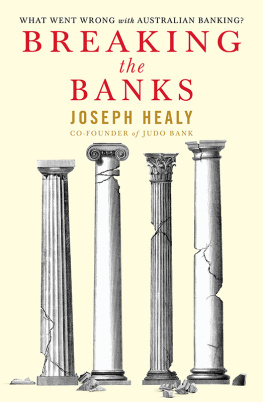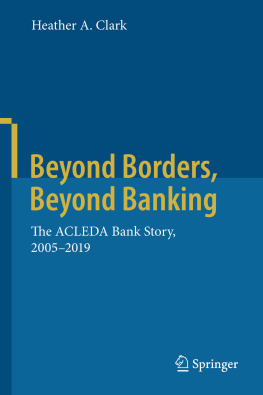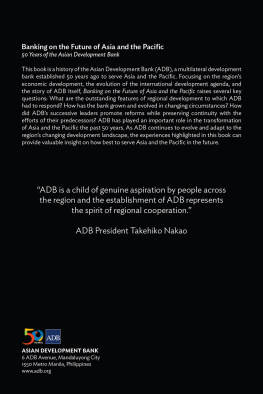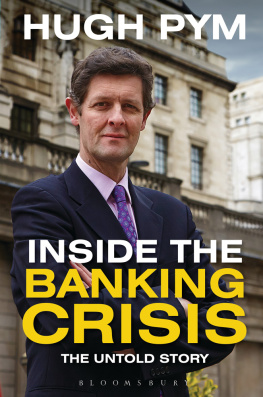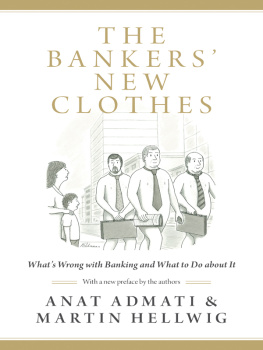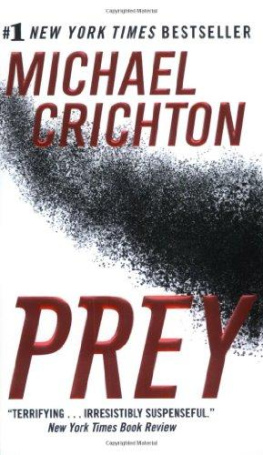ABN AMRO Bank. - The perfect prey: the fall of ABN Amro, or what went wrong in the banking industry
Here you can read online ABN AMRO Bank. - The perfect prey: the fall of ABN Amro, or what went wrong in the banking industry full text of the book (entire story) in english for free. Download pdf and epub, get meaning, cover and reviews about this ebook. City: London;Netherlands, year: 2010;2009, publisher: Quercus, genre: Detective and thriller. Description of the work, (preface) as well as reviews are available. Best literature library LitArk.com created for fans of good reading and offers a wide selection of genres:
Romance novel
Science fiction
Adventure
Detective
Science
History
Home and family
Prose
Art
Politics
Computer
Non-fiction
Religion
Business
Children
Humor
Choose a favorite category and find really read worthwhile books. Enjoy immersion in the world of imagination, feel the emotions of the characters or learn something new for yourself, make an fascinating discovery.

- Book:The perfect prey: the fall of ABN Amro, or what went wrong in the banking industry
- Author:
- Publisher:Quercus
- Genre:
- Year:2010;2009
- City:London;Netherlands
- Rating:4 / 5
- Favourites:Add to favourites
- Your mark:
- 80
- 1
- 2
- 3
- 4
- 5
The perfect prey: the fall of ABN Amro, or what went wrong in the banking industry: summary, description and annotation
We offer to read an annotation, description, summary or preface (depends on what the author of the book "The perfect prey: the fall of ABN Amro, or what went wrong in the banking industry" wrote himself). If you haven't found the necessary information about the book — write in the comments, we will try to find it.
ABN AMRO Bank.: author's other books
Who wrote The perfect prey: the fall of ABN Amro, or what went wrong in the banking industry? Find out the surname, the name of the author of the book and a list of all author's works by series.
The perfect prey: the fall of ABN Amro, or what went wrong in the banking industry — read online for free the complete book (whole text) full work
Below is the text of the book, divided by pages. System saving the place of the last page read, allows you to conveniently read the book "The perfect prey: the fall of ABN Amro, or what went wrong in the banking industry" online for free, without having to search again every time where you left off. Put a bookmark, and you can go to the page where you finished reading at any time.
Font size:
Interval:
Bookmark:
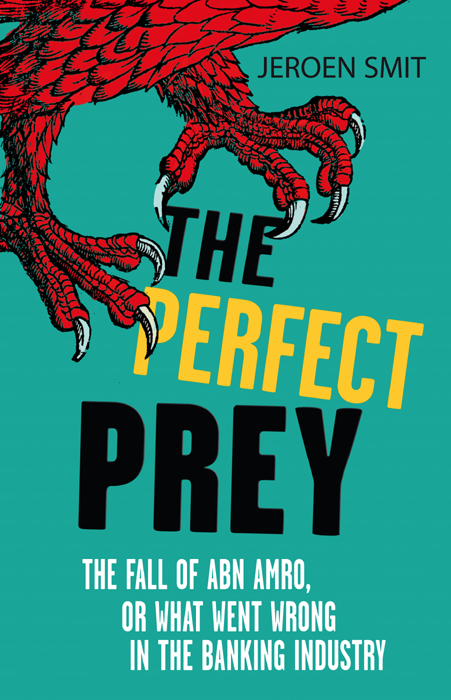
Jeroen Smit
THE PERFECT PREY
The fall of ABN Amro, or what went wrong in the banking industry
Quercus
First published in Great Britain in 2009 by
Quercus
21 Bloomsbury Square
London
WC1A 2NS
Copyright 2009 by Jeroen Smit
Copyright 2009 English translation by Donald Gardner, Sam Herman,
Richard Jurgens and Annie Wright
The moral right of Jeroen Smit to be identified as the author of this work has been asserted in accordance with the Copyright, Designs and Patents Act, 1988.
Originally published in Dutch as De prooi by Prometheus, Amsterdam, 2008
All rights reserved. No part of this publication may be reproduced or transmitted in any form or by any means, electronic or mechanical, including photocopy, recording, or any information storage and retrieval system, without permission in writing from the publisher.
A CIP catalogue record for this book is available from the British Library
ISBN 978 1 84916 268 5
Printed and bound in Great Britain by Clays Ltd, St Ives Plc
10 9 8 7 6 5 4 3 2 1
The publisher is pleased to acknowledge that publication has been made possible with the financial support from the Foundation for the Production and Translation of Dutch Literature.
Why has Hollands leading international bank been reduced to a mere shadow? For 183 years, ABN Amro and its predecessors were the driving force of the Dutch economy. The nations flagship. This was where the best bankers were trained; ABN Amro carved out new terrain for Dutch companies abroad. Its green and yellow logo gave Dutch travellers a sense of pride in cities around the world.
Until recently, ABN Amro catered to millions of private customers and hundreds of thousands of companies. It was at the heart of financial networks in the Netherlands and, to a lesser extent, United States, Brazil and Asia.
ABN Amro made huge profits. In 2006, it cleared 4.7 billion euros. In the seventeen years after ABN and Amro merged, profits rose by an average of 16 per cent a year. Turnover grew from five to almost 23 billion euros. Its workforce practically doubled to 108,000.
Yet despite its size and growth, in recent years the bank had lost its sense of direction. Analysts, shareholders, customers and later even its own employees voiced a deafening chorus of doubt regarding the banks leadership and policy; hardly anyone believed in its strategy any more.
In the spring of 2007, I set out with a completely open mind to find out why it was that ABN Amro had foundered. As in my previous book about another Dutch corporate giant, Ahold, I wanted to create an accurate and accessible reconstruction. One based around the stories of those directly involved.
This reconstruction begins in 1990, when two bitter rivals, ABN and Amro, the two Dutch banks with the biggest high-street profile, merged. They joined forces because both banks burned with ambition to be global leaders. For years, ABN Amro was one of the predators in a banking world that was consolidating, in which efficiency and economy of scale went hand in hand.
But then the predator became the prey. ABN Amro was now fair game. After a vicious struggle, in October 2007 a consortium comprising Royal Bank of Scotland, Fortis and Banco Santander paid 71 billion euros to split the bank into three. No bank had ever cost that much money.
Why had the predator become the prey? Over the last eighteen months I asked that question to 12 (former) governors, 17 (former) members of the managing board, 43 (former) general managers and department managers and a handful of ABN Amros consultants. With some, I spoke more than once. I also spoke to over 30 managing directors and (president) governors of other banks (including various members of the managing boards and supervisory boards of Fortis and ING) , politicians, supervisors and one or two civil servants.
In all, I conducted 133 off-the-record interviews with people who had played key roles between 1990 and 2007. Managing directors who had taken important decisions, or should have done. Off-the-record means that no one is quoted directly. This reconstruction is written from the perspective of the omniscient author.
Almost without exception, the demise of ABN Amro had left these men angry, sad, disappointed and frustrated. The interviews resulted in over 900 pages of personal reconstructions and subjective truths. As Douwe Draais-ma, professor of history of psychology in Groningen, points out, Memory helps us safely through time.
Each conversation began with the same question. Why has the bank disappeared? And ended with the same question. What should I not leave out of this reconstruction at any cost? In the end, it was ABN Amros defective management and flawed governors that drew the spotlight in almost every conversation. Many of those I spoke to admitted their own share of the blame, however cautiously. This story is therefore about the bankers who ran ABN Amro, most particularly about Rijkman Groenink, the man who sat on the managing board for almost twenty years, the last seven as its chairman.
More than anything, this book reflects those interviews. By comparing the various personal observations and interpretations, and placing them in chronological context, I have tried to make this reconstruction as accurate as possible. It is a version of the truth that most of those involved will, I hope, be able to recognise and acknowledge.
I have done my best to avoid mistakes. As many of the facts as possible were checked and all kinds of situations and opinions were referred in dozens of interviews to the people involved. In these conversions I often disclosed parts of my reconstruction and asked those involved to point out anything they might consider incorrect.
There were a few instances in which key players blatantly contradicted one another. In most cases I have left it that way. In one case I had to decide which truth to follow. I chose the truth that seemed most likely in the overall context.
As the conversations continued and heads nodded, I became increasingly confident about committing the story to print. I apologise if, despite all this, there are any factual or other errors in the book.
ABN Amro, or what remains of it, never opposed my attempts to speak to the principal players in this drama at any time. In one of two instances (former) employees of the bank even helped me contact people I wanted to interview.
I would like to thank everyone I spoke to for their time, their honesty, the piles of confidential material that they gave me and above all the trust they have shown. For many it was the need to draw lessons from the collapse of this financial institution that prompted their candour. Lessons about how managing directors, governors, supervisors and politicians do their work. Lessons that apply across the board in corporate Holland.
I would also like to thank advertising designer and friend Eugne Roorda, who convinced me that the cover could be much better, and his colleague and art director Mart Boudestein for the design. My gratitude also to Peter Boer for sifting through the photos.
My thanks to my good friend and specialist on financial matters Hans Horn for his pointed and constructive criticism. And my thanks to one of the best sparring partners around, who prefers to remain anonymous, for his support from the sidelines. This wise man, an expert on ABN Amro, helped me correct and put situations and sketches of individuals into perspective.
Above all, I would like to thank my wife Doret and my breathtaking sons Jack and Rover for the patience they showed to their husband and father, who spent far too little time with them while engaged in this project.
Font size:
Interval:
Bookmark:
Similar books «The perfect prey: the fall of ABN Amro, or what went wrong in the banking industry»
Look at similar books to The perfect prey: the fall of ABN Amro, or what went wrong in the banking industry. We have selected literature similar in name and meaning in the hope of providing readers with more options to find new, interesting, not yet read works.
Discussion, reviews of the book The perfect prey: the fall of ABN Amro, or what went wrong in the banking industry and just readers' own opinions. Leave your comments, write what you think about the work, its meaning or the main characters. Specify what exactly you liked and what you didn't like, and why you think so.

